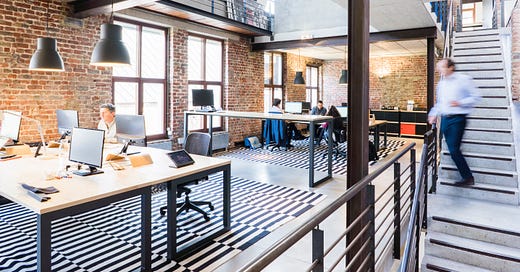Business culture has changed dramatically in the last decade.
Cubicles inside offices are a thing in the past. Partitions and walls have all come down to make way for open plan working space and hot-desking.
For those of you who are unfamiliar with hot-desking, it is a recent evolution of office design. Office staff no longer have their own space to sit and work. Hot desk offices usually only offer blank long tables and staff get to choose where they want to sit and get their work done at their own convenience.
Right off the bat, one would think hot-desking will not work in a school.
Not true.
Hot-desking is actually not new in education. Many schools in the last decade have adopted this hot-desking culture. The traditional rows of desks in classes have been replaced by circular booths, shared tables and other spaces. The tables and chairs also come with different heights to allow both standing and sitting. It fits perfectly with activity-based learning/working. It allows students to collaborate, work together, solve problems, and work as a team. These are the skills students will learn and experience in a hot-desking school culture.
Then the pandemic came.
Schools and teachers have claimed that they’ve scrambled into offering online learning to students.
This is actually not true either.
In my opinion, schools and teachers were quite ready for online education. They were just not used to delivering education on-line. But it is a proven fact that it could be done. There are glitches, of course, but we all know they will get fixed. So kudos to all for a successful online learning school year.
But wait, if online education works, what does that for ‘traditional’ schooling and ‘traditional’ classroom layouts?
Around the world many education authorities, including the Ontario Ministry of Education, have indicated that online education will continue to be offered to families. That means at least some parents will choose to take online education from here onwards as opposed to attending a bricks-and-mortar school. That will negatively affect the enrolment of bricks-and-mortar schools unless they too offer online education.
However, in the end, hot-desking did not save the schools any money. It is just a more convenient setup for activity-based learning.
But no-desking will be the way to save money.
Teaching staff will not be coming to school to deliver their lessons. They will all be doing it from home. Schools may only need an office to run the day-to-day business.
Now, that’s a game changer. And I guarantee there will be a lot less student discipline issues.
So, for the school owners, hot-desking or no-desking? Your choice.
Dr. Patrick Lee
Co-Founder & Director, Whitehead, Lee & Associates Co. Ltd
Follow WLA on Facebook and LinkedIn @PLeeEDU






Very interesting argument. Education leaders need one more thing to learn. Furniture Design.